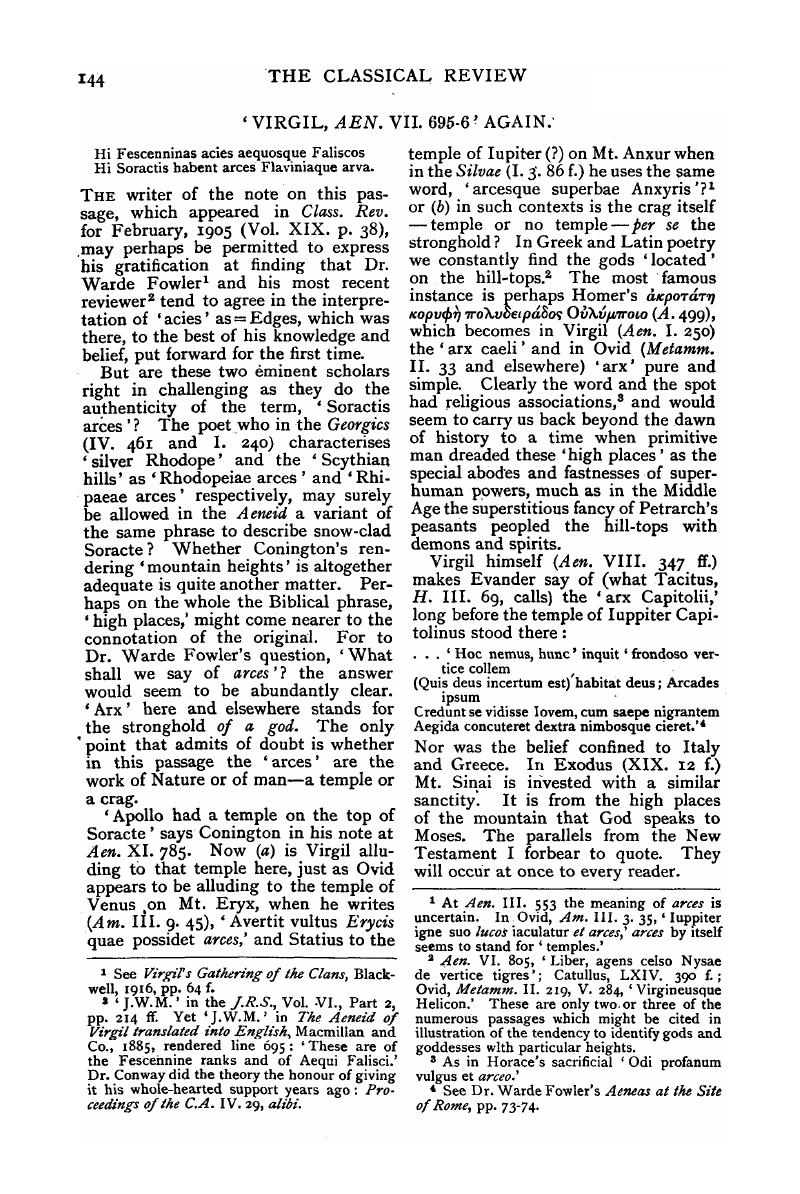No CrossRef data available.
Article contents
‘Virgil, Aen. VII. 695-6’ Again
Published online by Cambridge University Press: 27 October 2009
Abstract

- Type
- Review Article
- Information
- Copyright
- Copyright © The Classical Association 1919
References
page 144 note 1 See Virgil's Gathering of the Clans, Blackwell, 1916, pp. 64 f.Google Scholar
page 144 note 2 ‘J.W.M.’ in the J.R.S., Vol. VI., Part 2, pp. 214 ffGoogle Scholar. Yet ‘J.W.M.’ in The Aeneid of Virgil translated into English, Macmillan and Co., 1885Google Scholar, rendered line 095: ‘These are of the Fescehnine ranks and of Aequi Falisci.’ Dr. Conway did the theory the honour of giving it his whole-hearted support years ago : Proceedings of the C.A. IV. 29, alibi.
page 144 note 1 At Aen. III. 553 the meaning of arces is uncertain. In Ovid, Am. III. 3. 35, ‘Iuppiter igne suo lucos iaculatur et arces, arces by itself seems to stand for ‘temples.’
page 144 note 2 Aen. VI. 805, ‘Liber, agens celso Nysae de vertice tigres’; Catullus, LXIV. 390 f.; Ovid, , Metamm. II. 219, V. 284Google Scholar, ‘Virgineusque Helicon.’ These are only two. or three of the numerous passages which might be cited in illustration of the tendency to identify gods and goddesses with particular heights.
page 144 note 3 As in Horace's sacrificial ‘Odi profanum vulgus et arceo.’
page 1474 note 4 See DrFowler's, Warde Aeneas at the Site of Rome, pp. 73–74.Google Scholar




